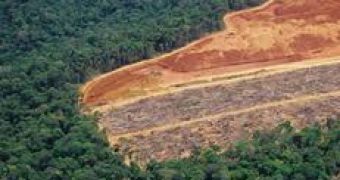Earlier today, the World Wildlife Fund made it public news that, according to their estimates, the global wood demand is set to triple by the year 2050.
This basically means that, in order for our ever expanding society to be able to carry on with its daily routine, more wood will have to be taken out of forests and plantations worldwide on a yearly basis.
Interestingly enough, it looks like our trying to let go of fossil fuels and pushing for the use of bioenergy instead is one of the underlying causes of said increase in global wood demand.
Thus, efforts to up and improve on bioenergy production translate into an increased demand for wood.
Should this wood be provided in unsustainable ways, it is quite likely that valuable ecosystems will be destroyed, and that both food and water security will find themselves undermined.
Needless to say, environmentalists are not at all pleased by this situation, especially since both illegal logging industry and the poor management of several forest areas are already a major issue in various parts of the world.
According to the World Wildlife Fund, it is of utmost importance that human society do its best to promote forest conservation, and that businesses whose working agenda requires that wood be used as a raw material do their best to make sure their demands are met by means of sustainable sources alone.
Commenting on this predicted increase in global wood demand and its potential impact on the environment, the Director of the World Wildlife Fund's Global Forest Programme, Rod Taylor, argued as follows:
“A scenario of tripling the amount of wood society takes from forests and plantations needs to motivate good stewardship that safeguards forests – otherwise we could destroy the very places where wood grows.”
“The key challenge for forest-based industries is how to supply more wood products with less impact on nature. This challenge spans the whole supply chain, from where and how wood is grown and harvested to how wisely and efficiently it is processed, used and reused,” he went on to add.

 14 DAY TRIAL //
14 DAY TRIAL //